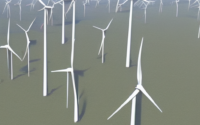Digital Innovations in Wildlife Conservation
Digital Innovations in Wildlife Conservation
Introduction:
Wildlife conservation is a critical issue in today’s world as various species face threats from habitat loss, poaching, climate change, and other human-related activities. Fortunately, digital innovations are playing a significant role in assisting wildlife conservation efforts. From monitoring endangered species to combatting illegal wildlife trade, technology is revolutionizing the way we protect and preserve our precious wildlife.
Drones for Aerial Surveillance:
One of the most impactful digital innovations in wildlife conservation is the use of drones for aerial surveillance. Drones equipped with cameras and sensors can be deployed to monitor wildlife populations, track animal movements, and detect illegal activities such as poaching. By providing real-time data to conservationists and authorities, drones have become invaluable tools in protecting endangered species.
Camera Traps for Wildlife Monitoring:
Camera traps have revolutionized wildlife monitoring by capturing images and videos of elusive animals without human interference. These motion-activated cameras are strategically placed in the wild to monitor species behavior, population dynamics, and habitat usage. The data collected from camera traps not only helps researchers study wildlife more effectively but also aids in conservation decision-making.
GIS Technology for Habitat Mapping:
Geographic Information System (GIS) technology is instrumental in habitat mapping and spatial analysis for wildlife conservation. By integrating satellite imagery, GPS data, and other geospatial information, conservationists can accurately map and monitor wildlife habitats, identify conservation priorities, and plan ecosystem restoration projects. GIS technology enables data-driven conservation strategies that enhance habitat protection and restoration efforts.
Poaching Detection with AI:
Artificial Intelligence (AI) is being utilized to combat wildlife poaching through advanced poaching detection algorithms. AI-powered systems analyze large datasets from camera traps, drones, and other sources to identify suspicious activities indicative of poaching. By automating the detection process, AI helps wildlife authorities respond quickly to potential threats and safeguard vulnerable species from illegal hunting.
Crowdsourcing for Wildlife Monitoring:
Crowdsourcing platforms are engaging citizen scientists in wildlife monitoring and conservation initiatives. Through mobile apps and online platforms, volunteers can report wildlife sightings, collect field data, and participate in conservation projects from anywhere in the world. Crowdsourcing enables real-time data collection on a large scale, supplementing traditional research methods and increasing public awareness about wildlife conservation.
Blockchain for Combatting Wildlife Trafficking:
Blockchain technology is being leveraged to combat illegal wildlife trafficking by creating secure and transparent supply chains. By recording wildlife transactions and tracking products from source to destination, blockchain ensures the authenticity and legality of wildlife products. This decentralized system helps disrupt black markets, reduce demand for illegal wildlife products, and hold traffickers accountable for their illegal activities.
Monitoring Climate Change Impacts:
Digital innovations are also essential for monitoring the impacts of climate change on wildlife populations and ecosystems. Remote sensing technologies, climate models, and data analytics tools are used to assess changing environmental conditions, predict species vulnerabilities, and implement adaptive management strategies. By monitoring climate change impacts, conservationists can better protect species at risk and promote ecosystem resilience.
Conclusion:
In conclusion, digital innovations are transforming wildlife conservation by providing new tools and solutions to address conservation challenges. From drones and camera traps to AI and blockchain technology, the digital revolution is enhancing our ability to protect and preserve biodiversity. By embracing these innovations and fostering collaboration between technology experts and conservationists, we can ensure a sustainable future for our planet’s precious wildlife.


